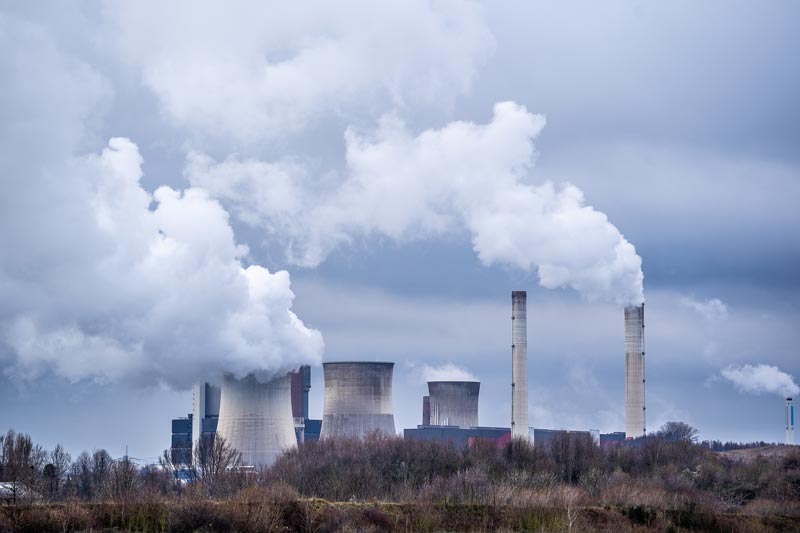The environment plays a critical role in our health, and this is especially true for our lungs. Ensuring that your lungs are healthy is crucial, as they play a significant role in your body’s ability to function optimally. However, with increasing environmental pollution, the question arises, how does the environment affect lung health? As we breathe in the air around us, we expose our lungs to various environmental factors that can have positive and negative effects. This article discusses the impact of the environment on lung health, and Dr. Jasdeep Sidana, an expert in the field, provides his insights.
Common Environmental Pollutants that Affect Lung Health
- Air pollution arises from various sources, such as emissions from vehicles, industries, and burning fossil fuels. However, it is, by far, the most significant environmental factor that can severely affect lung health. When we breathe in polluted air, we expose our lungs to various harmful substances, including particulate matter, ozone, and nitrogen dioxide.
These pollutants can cause lung inflammation, leading to various health problems, including asthma, Chronic Obstructive Pulmonary Disease (COPD)), and lung cancer. Dr. Jasdeep Sidana has conducted extensive research on the effects of air pollution on lung health and has been at the forefront of efforts to raise awareness of this critical issue. - Tobacco smoke is an air pollutant caused by burning combustible materials like tobacco and other certain chemicals. It contains many hazardous pollutants, including arsenic, formaldehyde, hydrogen cyanide, and carbon monoxide. Tobacco smoke is released into the environment when machines burn tobacco and increase its potency or when people smoke cigarettes or cigars.
These toxins cause inflammation in one’s lungs, and long-term exposure can lead to severe respiratory diseases such as COPD and lung cancer. Furthermore, secondhand smoking has been proven to be particularly dangerous, indoors and outdoors, due to inhaling toxins from someone else’s cigarette smoke, such as carbon monoxide, that can travel long distances even if there is no direct contact with the smoker.
Dr. Jasdeep Sidana emphasizes that since we can’t avoid these toxicants in the environment today, it weighs heavily upon us to lessen our chances of getting affected by these pollutants. We can do this by not smoking or reducing our exposure to secondhand smoke from other sources. - Indoor pollutants are a range of contaminants, including toxins emitted from furniture, chemicals such as benzene, cleaning agents, and other sources such as pets and pests. They can become a pollutant when released into an indoor space, as the enclosed area enables them to accumulate and cause adverse effects on human health.
Studies suggest that exposure to these artificial chemicals can negatively affect lung health, leading to long-term consequences such as asthma, bronchitis, and even cancer.. Therefore, measures must be taken to ensure healthy air quality inside any indoor space.
Climate Change and Lung Health
As temperatures rise and weather patterns become more erratic, an increase in extreme weather events (such as heatwaves, droughts, and floods) can have negative impacts on our lungs. These conditions can lead to increased levels of air pollution, dust, and pollen in the atmosphere, which can cause significant discomfort for people with asthma and other lung conditions. Therefore, Dr. Sidana recommends that we take every possible measure to reduce our emissions of harmful gasses into the environment by reducing fossil fuel consumption and investing in renewable energy sources.
Environmental Tobacco Smoke and Lung Health
Environmental tobacco smoke (ETS) combines two kinds of smoke released into the air — mainstream and sidestream. A smoker directly exhaleS mainstream smoke, while they emit sidestream smoke from the burning end of cigarettes, cigars, and other tobacco products. Studies have shown that ETS has a wide range of adverse effects on lung health, including asthma attacks, coughing, bronchitis, and an increased risk of developing cancer. Therefore, Dr. Sidana recommends avoiding smoking in enclosed spaces and places with high concentrations of people (such as public transport or restaurants). This will help reduce the chances of secondhand smoke-related illnesses.
Occupational Hazards and Lung Health
Working in an environment where pollutants are present can be dangerous for our health, as some of these toxins can contribute to severe lung conditions. Dr. Sidana explains that workers exposed to these hazardous materials or activities regularly tend to suffer from diseases such as COPD and lung cancer much more than non-exposed individuals. Therefore, Dr. Sidana recommends that employers take all necessary steps to ensure the health and safety of their employees by providing protective clothing and equipment, limiting exposure time, and educating workers on the risks associated with occupational hazards.
So, How Does the Environment Affect Lung Health?

Dr. Jasdeep Sidana, an expert in respiratory medicine, explains that the environment can damage the respiratory system and cause inflammation and allergic reactions. Increased susceptibility to respiratory infections and the development of respiratory diseases are also some effects of environmental factors on lung health. Children are especially vulnerable to these factors, as their lungs are still developing.
Effects of Environmental Factors on Specific Lung Diseases
Asthma and chronic obstructive pulmonary disease (COPD) are two common respiratory diseases that are impacted by environmental factors. Asthma causes the airways to narrow, making it hard to breathe. Dr. Jasdeep Sidana explains that asthma is often triggered by environmental factors, such as air pollution, pollen, and dust. Similarly, COPD is a chronic inflammatory lung disease often caused by long-term exposure to environmental pollutants, such as tobacco smoke and air pollution.
Prevention and Mitigation of Environmental Factors Affecting Lung Health
There are several strategies that individuals can take to protect their lung health. This includes:
- Avoiding exposure to tobacco smoke and air pollution
- Staying active
- Getting vaccinated against respiratory infections, such as the flu and pneumonia
- Maintaining a healthy diet
- Using an air purifier indoors to reduce airborne particles
In addition, various treatments are available for lung health issues, including medications, pulmonary rehabilitation, and surgery. Dr. Jasdeep Sidana has been a strong advocate for preventative measures and has worked to develop new treatments for various respiratory conditions.
Conclusion
The environment plays a crucial role in our lung health, and it is vital to take steps to protect our lungs from harmful environmental factors. Dr. Jasdeep Sidana has been a leading voice in the field of respiratory medicine, advocating for preventative measures and working to develop new treatments for a range of respiratory conditions. By taking steps to protect our lungs and supporting the work of experts like Dr. Sidana, we can ensure that we can breathe easy and live healthy lives.
